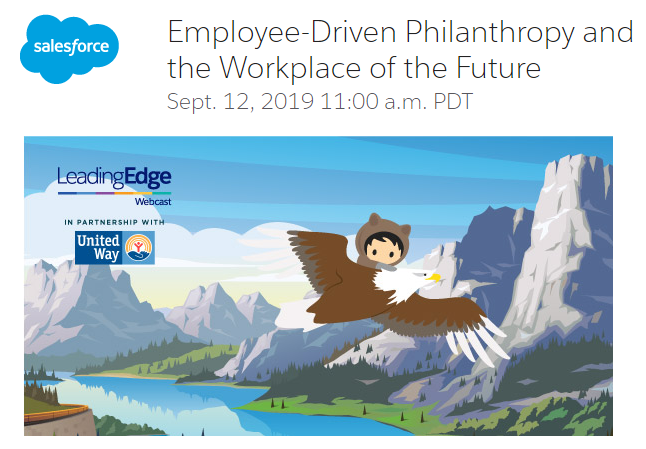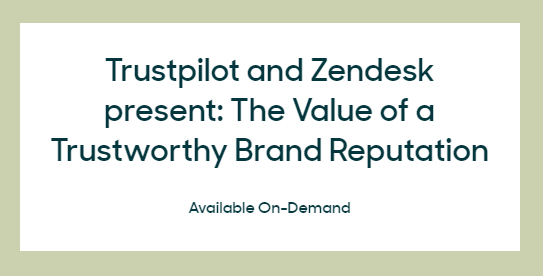3 Kinds Of Co-Marketing And How To Assess Fit
By Nicole Hitner, Exago
There’s strength in numbers, and that’s as true for marketing as it is for anything else. If you’re looking for a way to breathe new life into your content program, consider joining forces with other brands for a little symbiotic promotion. Co-marketing (not to be confused with co-branding) is an excellent way to enhance your promotional reach, professional network, and brand image. Don’t worry, you don’t have to collaborate on a new, combined product — that’s co-branding. You also don’t have to sell the other brand’s products (a.k.a. channel sales). Co-marketing is about collaborating on a project that benefits both brands in the partnership.
Lots of big-name software companies are buddying up for co-marketing campaigns, but you don’t have to be Uber or Etsy to capitalize on the strategy. Here are three kinds of co-marketing we deploy at Exago and how to put them to work at your company.
#1: Customer Co-Marketing
There’s a good chance you already promote your brand alongside customer brands. To my mind, that counts as co-marketing! Testimonial videos, case studies, press releases, product reviews...they’re all an opportunity to show your prospects that companies like theirs have found success with your product.
Your brand gets a lot out of this kind of co-marketing, but your customer benefits too. They get free publicity, public association with your brand, and a chance to tell their success story, not to mention backlinks to their site. Additionally, if your co-marketing campaign produces any new assets, such as video footage or boilerplate copy, you can pass them on to your customer to use independently in their own future campaigns.
Assessing Fit: Conduct this kind of co-marketing with a product champion — a company that not only finds value in your product but wants to see it flourish. Then look for a company whose profile — geography, size, vertical, etc. — aligns well with any existing marketing initiatives you have. As always, make sure your prospective collaborator is enthusiastic about the project before moving forward.
Example: You’re an electronic health record (EHR) software provider, and you team up with one of your customers, an oncology clinic, on a testimonial video focusing on improved care outcomes and operational efficiency.
Genres: testimonials, case studies, press releases, product reviews.
#2: SME Co-Marketing
Be a loudspeaker for people and organizations whose expertise would interest your market. Offer them a platform from which to share their knowledge and use the resulting content to draw traffic, generate leads, and build your brand’s reputation. In exchange for their time, the subject-matter expert (SME) gains publicity and something to add to their resume or portfolio.
Assessing Fit: Finding the right people for this style of co-marketing can be tricky, but I’ve found that in the software world, consultants are a good place to start. They’re part of your product’s ecosystem and know a great deal about your technology but aren’t competitors. Academics and researchers are also often a safe bet. Keep an eye out for SMEs at conferences and trade shows; they’ll often be the ones giving talks. Remember, what you want is someone who’s passionate about a topic that is related to your product’s value proposition and appealing to your market.
Example: You produce a nonprofit fundraising application and invite a behavioral economist onto your podcast to discuss the psychology of gift-giving and what motivates philanthropists.
Genres: podcasts, guest blog posts.
#3: Partner Co-Marketing
This is where it gets really exciting. Although SMEs usually yield exceptional content, they may or may not have an audience you can sell to. Academics, for example, will likely share the content you produce together with their students and other academics, not your target market. It’s up to you to promote that content to the audiences you care about.
Not so with partner co-marketing! When you join forces with a non-competing company serving your market space, the payoff is the ability to cross-promote to each other’s social media followers and email lists, mutually broadening your reach.
Assessing Fit: Fit in a partner co-marketing scenario is crucial. Look for a brand that serves the same market you do, does not compete with you, and can speak to a subject that would attract your market to you. Identifying that subject and crafting content around it often requires some exploration and creativity, but the results are worth it. If the partnership is a strong one, you may unearth a number of content topics and collaborate on a whole series of pieces. It also helps if the prospective partner is similar to you in size and/or reach. Both you and your partner are hoping to walk away from the collaboration with added exposure, so comparable marketing power helps ensure that the benefits are equitable.
Example: GoPro and Red Bull, united in their shared vision of “inspir[ing] the world to live a bigger life,” launched a widely successful international content partnership back in 2016. Their gripping videos featured Red Bull-sponsored extreme sport athletes filming their own stunts, attracting those with similar interests and aspirations. The software equivalent might look more like this:
Or like this:
Both Salesforce and Zendesk chose to collaborate with non-SaaS partners, probably to avoid the possibility of competition now or in the future. Don’t be afraid to seek partners in other industry verticals!
Genres: Live events, webinars, videos
Thinking of co-marketing in terms of these three categories can help you identify opportunities to collaborate on marketing content. It may take some time to develop the necessary pipelines and processes, but thoughtful co-marketing will accelerate your campaigns and help drive growth. Start projects off slow and build on past successes, tracking your content’s performance as you go. The better your data, the easier it will be to refine your co-marketing initiative into an indispensable part of your content program.
 About The Author
About The Author
Nicole Hitner is Content Strategist at Exago, Inc., producers of embedded business intelligence for software companies. She manages the company’s content marketing, writes for their blog, hosts their podcast Data Talks, and assists the product design team in continuing to enhance Exago BI. You can reach her at content@exagoinc.com.


